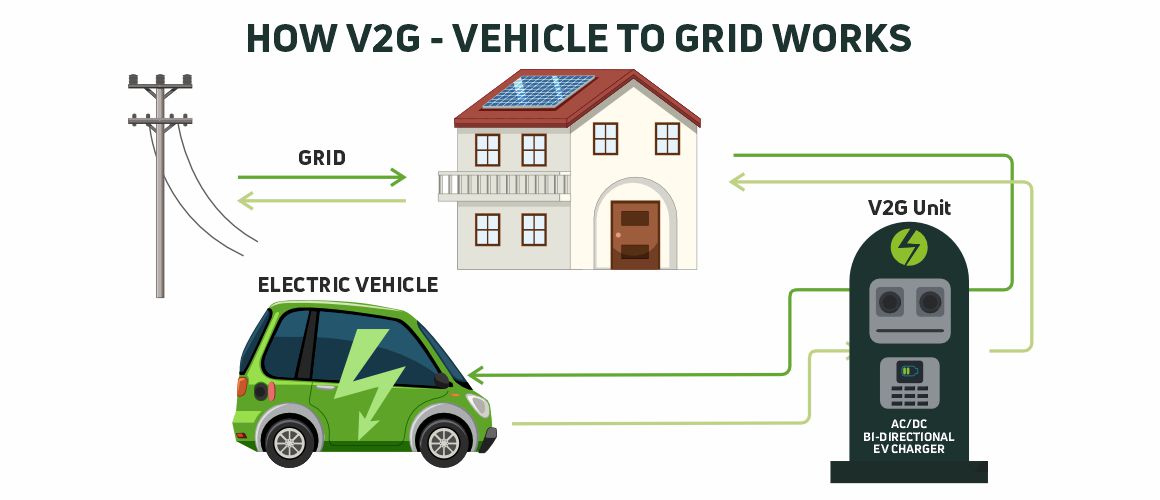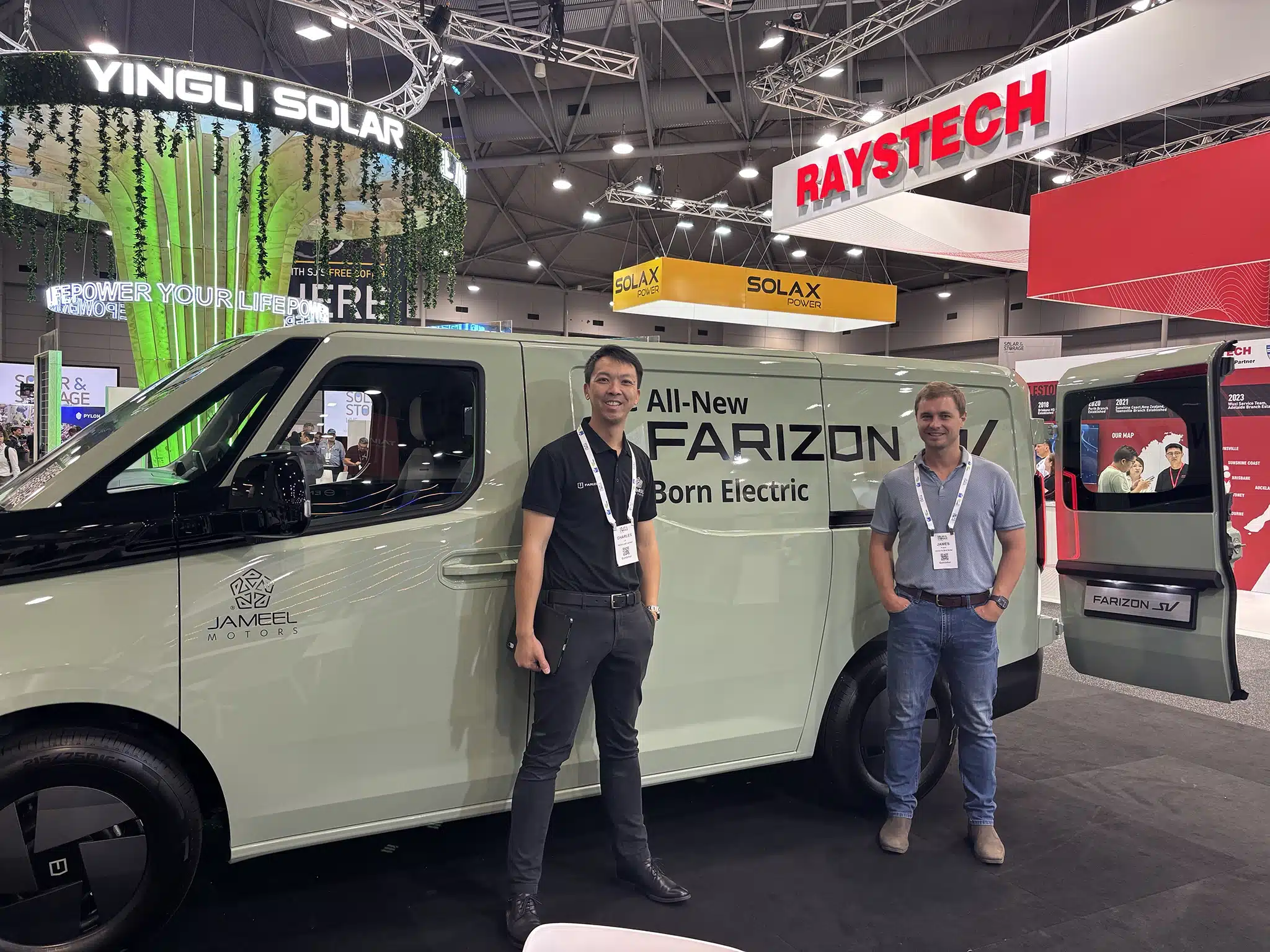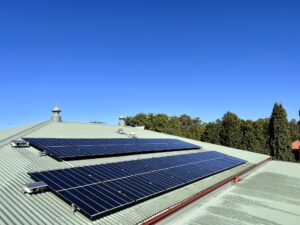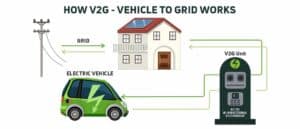As Australia moves towards a greener future, the integration of Vehicle-to-Grid (V2G) technology presents an exciting opportunity for electric vehicles (EVs) to not only consume power but also to export it back to the grid. In 2025, this innovative system could reshape our energy landscape, allowing EV owners to contribute to the electricity grid while benefiting from their vehicle’s capabilities. This article delves into the workings of V2G technology, its current state in Australia, and the potential it holds for energy sustainability.
What is Vehicle-to-Grid (V2G) Technology?
How does V2G technology work?
Vehicle-to-Grid (V2G) technology is a groundbreaking concept that allows electric vehicles to communicate with the electricity grid. When an EV is plugged into a compatible charger, it can either draw power from the grid or export stored energy back. This process utilises bidirectional charging, meaning that the flow of electricity can go both ways. By leveraging the power stored in car batteries, V2G enables EV owners to supply electricity during peak demand times, reducing strain on the grid and potentially earning money through energy exports. Additionally, V2G systems can help stabilise the electricity network by providing energy storage, making them invaluable as we transition to a renewable energy future.
Essentially, the functionality of V2G hinges on smart technology that allows the EV to act as a mini power plant. Each electric vehicle becomes a part of a larger energy system, where it can help balance supply and demand. By ensuring that energy can flow back to the grid, V2G technology stands to transform how we think about energy consumption. It opens up exciting possibilities for energy management, where EVs can serve as backup power sources, especially during power outages or when renewable energy generation is low.

What are the key components of a V2G system?
A successful Vehicle-to-Grid (V2G) system relies on several key components that work in harmony to facilitate energy exchange. First and foremost, a bidirectional charger is essential; this charger allows electricity to flow both into the EV and back to the grid. Moreover, an efficient inverter is required to convert the DC electricity stored in the car batteries into AC electricity, which is compatible with the electricity network. Additionally, a robust communication system is necessary for the EV to interact with the grid, ensuring that energy is exported at the right times and in the right amounts. This infrastructure underpins the entire V2G operation, enabling EV owners to maximise their vehicle’s energy potential.
Furthermore, compatibility between various components is crucial for seamless integration. EVs must possess V2G capabilities, which are increasingly being offered in newer EV car models. This compatibility allows for a more extensive network of V2G systems, facilitating the growth of this technology across Australia. As V2G projects expand, more infrastructure, such as smart chargers and energy management systems, will be needed to support this innovative approach to energy sharing and consumption.
Why is V2G important for the future of energy?
V2G technology is poised to play a critical role in the future of energy, particularly as the demand for renewable energy sources increases. By allowing electric vehicles to export energy back to the grid, we can create a distributed energy system that enhances grid reliability and resilience. This is especially important as Australia seeks to reduce its reliance on fossil fuels and transition to a cleaner energy landscape. V2G can complement renewable energy generation by storing excess energy when production is high, then releasing it during periods of low generation, helping to balance the energy supply.
V2G-capable EVs can act as energy storage solutions, absorbing surplus energy when it’s available and providing it back to the grid when needed. This flexibility not only benefits the grid but also allows EV owners to potentially profit from their vehicles. By participating in V2G schemes, they can take advantage of dynamic pricing, especially during peak demand periods, leading to lower electricity bills and added income from energy exports.
What is the Current State of Electric Vehicles (EVs) in Australia?
How many electric vehicles are currently on Australian roads?
As of now, the number of electric vehicles on Australian roads is steadily increasing, reflecting a growing interest in sustainable transportation. Recent statistics indicate that there are over 300,000 electric vehicles registered across the country. This figure is a significant milestone, showcasing the shift in consumer attitudes towards EVs, driven by environmental concerns and the desire for cost-effective transportation options. Major cities like Sydney and Melbourne are leading the charge, with a notable concentration of EVs due to the availability of charging infrastructure and government incentives.
The growth in EV adoption is not just a passing trend; it’s part of a larger movement towards electrification in the automotive sector. Many Australians are recognizing the benefits of switching to electric vehicles, including lower running costs and reduced carbon emissions. With manufacturers ramping up production and introducing new models, the variety of EVs available to consumers continues to expand. As more people make the switch to electric, the potential for V2G technology to flourish grows, paving the way for a more sustainable energy future.
What are the growth trends for EV adoption in Australia?
The growth trends for EV adoption in Australia are nothing short of remarkable. Over the past few years, sales of EVs have surged, driven by advancements in technology, increased consumer awareness, and supportive government policies. Reports indicate that EV sales have been doubling year-on-year, with projections suggesting that by 2025, EVs could account for a significant portion of new car sales. This trend is bolstered by the decreasing cost of EV batteries, making electric vehicles more accessible to the average consumer.
Additionally, various incentives, including rebates and tax benefits, have encouraged more Australians to consider electric vehicles. The push for EV infrastructure, such as more EV chargers and better grid integration, is also contributing to this growth. With major car manufacturers committing to electrifying their fleets, the range of available options is expanding, catering to different consumer preferences. This momentum not only signifies a shift in transportation habits but also sets the stage for the adoption of V2G technology, which will thrive as the number of EVs on the road continues to rise.
How Will V2G Impact Australia’s Energy Grid in 2025?
What benefits can V2G bring to the Australian energy grid?
V2G technology has the potential to revolutionise Australia’s energy grid, offering numerous benefits that can enhance grid stability and efficiency. One of the main advantages is the ability to utilise the vast amount of energy stored in electric vehicle batteries as a distributed energy resource. This means that during peak demand times, V2G-enabled EVs can export electricity back to the grid, thus alleviating pressure on power plants and reducing the reliance on fossil fuels. By harnessing this stored energy, the grid can become more resilient and better equipped to handle fluctuations in demand.
Having a flexible system like V2G enables the grid to store excess energy when production is high and release it when needed, creating a more balanced energy ecosystem. This not only helps to stabilise the grid but also encourages further investment in renewable technologies. The economic implications of V2G are equally compelling, as it provides EV owners with opportunities to earn income through their vehicle’s energy exports, creating a win-win scenario for both consumers and the environment, supporting the goal of net zero emissions.
How can V2G help with peak demand management?
V2G technology can facilitate better load management by allowing utilities to communicate with EV owners about when to draw or supply power. This interaction can be optimized through demand response programs, where EV owners are incentivized to charge during off-peak hours and export energy during peak hours. As a result, V2G can help flatten the demand curve, making the energy system more efficient and reliable. By leveraging the capabilities of EVs, Australia can enhance its energy security while also promoting a cleaner, more sustainable energy future.
What role will government policies play in V2G implementation?
Government policies are vital for the successful implementation of V2G technology in Australia. Supportive regulations and incentives can encourage the adoption of electric vehicles and facilitate the development of necessary infrastructure. For instance, the government can provide grants for the installation of V2G chargers and promote programs that educate consumers about the benefits of vehicle-to-grid technology. Establishing clear standards for V2G systems will also ensure compatibility across different EV models and charging stations, fostering a cohesive network that can support widespread adoption.
How Is V2G Different To Vehicle-To-Load (V2L)?
Vehicle-to-Load (V2L) is a technology that allows electric vehicles (EVs) to function as mobile power sources. Using a built-in inverter, V2L enables an EV to supply electricity to external devices, appliances, or even another EV, effectively turning the car into a portable generator. This feature is particularly useful for camping, emergency backup power, or job sites where access to traditional power sources is limited. Unlike Vehicle-to-Grid (V2G), which sends power back to the electricity grid, V2L simply allows users to draw power directly from the vehicle’s battery for off-grid use.
FAQ
Q: What is Vehicle-to-Grid (V2G) technology?
A: Vehicle-to-Grid (V2G) technology allows electric vehicles (EVs) to not just draw power from the grid through chargers, but also send electricity back to the grid. This means your EV can act like a mini power plant.
Q: How do V2G chargers work?
A: V2G chargers are bi-directional chargers that enable the flow of electricity both ways – into your EV and back to the power grid. When you have a fully charged EV, you can export electricity to the grid during peak demand periods.
Q: What are the benefits of vehicle-to-grid in Australia?
A: The benefits of vehicle-to-grid in Australia include increased renewable energy usage, reduced energy costs for EV owners, and improved grid stability. Plus, it helps support V2G initiatives, enhancing the overall efficiency of our power systems.
Q: Can I use my EV for vehicle to home (V2H) applications?
A: Absolutely! With V2H technology, you can use your EV to power your home appliances directly. This is often referred to as vehicle-to-home, or V2H, which is super handy during power outages and unexpected weather events such as storms and cyclones.
Q: How can I export electricity from my EV to the grid?
A: To export energy to the grid, you’ll need a V2G-compatible EV and a bi-directional charger. When connected, your EV can send electricity back to the grid, especially when demand is high, allowing you to potentially earn money or credits on your energy bill.
Q: What role does the Australian Renewable Energy Agency play in V2G projects?
A: The Australian Renewable Energy Agency (ARENA) supports V2G projects by funding research and initiatives that promote the integration of EVs into the power grid, helping to increase the use of renewable energy in Australia.
Q: What is vehicle to load (V2L) and how does it relate to V2G?
A: Vehicle to load (V2L) is similar to V2H, but focuses on using your EV to power other devices or appliances directly. It complements V2G by allowing you to use energy stored in your EV for various purposes before sending any excess back to the grid.

Founder of Horan & Bird. Director of Master Electricians Australia and Board Member of Solar Accreditation Australia. John has played a key entrepreneurial role in the transformation of the Energy Landscape in Queensland.






